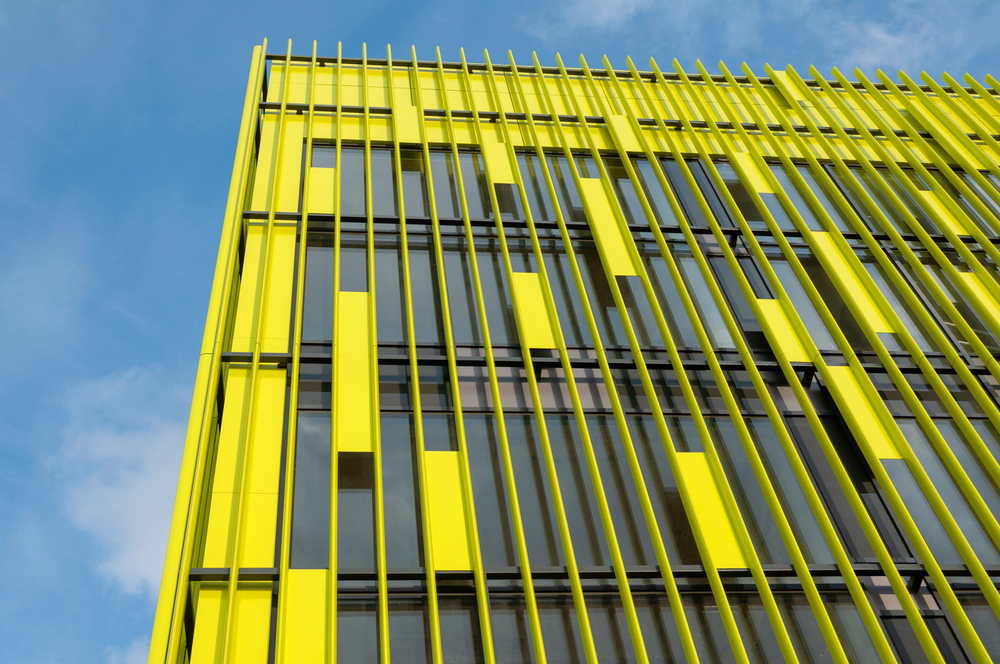Facade cladding systems have revolutionized the way we approach building design and construction. These innovative solutions not only enhance the aesthetic appeal of structures but also provide crucial functional benefits. In this comprehensive guide, we’ll explore the world of facade cladding systems, their types, benefits, and best practices for implementation.
Understanding Facade Cladding Systems
Facade cladding systems involve the application of one material over another to create a protective and decorative skin for buildings. This technique has gained popularity in modern architecture due to its versatility and effectiveness in improving building performance.
Key Components of Facade Cladding Systems
- Cladding material
- Insulation layer
- Vapor barrier
- Supporting structure
- Fastening system
Types of Facade Cladding Systems
There are several types of facade cladding systems, each with its unique characteristics and applications:
- Ventilated Facades
- Non-Ventilated Facades
- Rainscreen Cladding
- Curtain Wall Systems
- Structural Glazing
Materials Used in Facade Cladding Systems
The choice of material plays a crucial role in the performance and appearance of facade cladding systems. Here’s a detailed look at some popular options:
| Material | Advantages | Disadvantages |
| Metal (Aluminum, Steel, Copper) | Durability, modern appearance, low maintenance | Can be expensive, potential for thermal expansion |
| Wood | Natural aesthetics, good insulation | Requires regular maintenance, susceptible to weathering |
| Stone | Elegant appearance, longevity | Heavy, expensive, limited design flexibility |
| Ceramic | Versatile designs, durability | Can be brittle, higher installation costs |
| Composite | Cost-effective, versatile, lightweight | May have lower fire resistance, potential for delamination |
Emerging Trends in Facade Cladding Materials
- Photovoltaic cladding for energy generation
- Self-cleaning surfaces
- Biomimetic materials inspired by nature
- Smart materials that respond to environmental conditions
Benefits of Implementing Facade Cladding Systems
Facade cladding systems offer numerous advantages for both new constructions and renovations:
- Enhanced Aesthetics: Cladding can dramatically transform the appearance of a building, giving it a modern and stylish look.
- Weather Protection: Acts as a shield against rain, wind, and sun, protecting the underlying structure from environmental damage.
- Improved Energy Efficiency: Proper insulation and ventilation in cladding systems can significantly reduce heating and cooling costs.
- Acoustic Insulation: Many cladding materials help reduce noise transmission from the outside environment.
- Increased Durability: By protecting the building’s core structure, cladding systems extend the overall lifespan of the building.
- Low Maintenance: Many modern cladding materials require minimal upkeep, reducing long-term costs.
- Sustainability: Some cladding materials are recyclable and contribute to green building practices.
The Facade Cladding System Process
Implementing a successful facade cladding system involves several key steps:
1. Design and Planning
- Assess the building’s architectural style and desired aesthetic effect
- Choose suitable cladding materials based on location, climate, and functional requirements
- Develop detailed plans and drawings
2. Material Selection
- Consider properties such as durability, maintenance needs, and cost
- Ensure materials meet local building codes and environmental standards
- Source high-quality materials from reputable suppliers
3. Installation
- Prepare the building surface
- Install weather-resistant barrier if required
- Apply appropriate fixing methods (screws, adhesives, clips)
- Ensure proper alignment and spacing
4. Maintenance
- Regular inspections for damage or wear
- Cleaning to remove dirt and pollutants
- Prompt repairs to maintain effectiveness
Best Practices for Facade Cladding Systems
To maximize the benefits of facade cladding systems, consider the following best practices:
- Proper Ventilation: Ensure adequate air circulation to prevent moisture buildup and improve thermal performance.
- Expansion Joints: Allow for thermal expansion and contraction of materials to prevent warping or cracking.
- Water Management: Implement effective drainage systems to direct water away from the building envelope.
- Fire Safety: Choose materials and designs that meet or exceed local fire safety regulations.
- Sustainability: Opt for eco-friendly materials and consider the entire lifecycle of the cladding system.
Case Studies: Successful Implementation of Facade Cladding Systems
Modern Office Building in Urban Setting
Challenge: Create an energy-efficient, visually striking office building in a busy city center.
Solution:
- Material: Aluminum composite panels with a ventilated facade system
- Design: Sleek, minimalist aesthetic with integrated solar shading
- Result: 30% reduction in energy costs, improved indoor comfort, and a landmark addition to the cityscape
Historical Building Renovation
Challenge: Upgrade a 19th-century structure while preserving its character.
Solution:
- Material: Custom-fabricated terracotta tiles matching the original facade
- Design: Rainscreen cladding system to improve insulation without altering the building’s appearance
- Result: Preserved historical integrity while achieving modern energy efficiency standards
The Future of Facade Cladding Systems
As technology advances, we can expect to see exciting developments in facade cladding systems:
- Smart Facades: Integration of sensors and adaptive materials for optimized performance
- 3D-Printed Cladding: Custom, complex designs produced on-site
- Bio-Based Materials: Sustainable options derived from renewable resources
- Augmented Reality in Design: Enhanced visualization and planning tools for architects and clients
Conclusion: The Impact of Facade Cladding Systems on Modern Architecture
Facade cladding systems have become an integral part of contemporary building design, offering a perfect blend of form and function. By enhancing aesthetics, improving energy efficiency, and extending building lifespans, these systems are shaping the future of sustainable architecture.
As we continue to face environmental challenges and push the boundaries of design, facade cladding systems will play an increasingly important role in creating buildings that are not only beautiful but also resilient and efficient.
Whether you’re an architect, developer, or property owner, understanding the potential of facade cladding systems is crucial for staying ahead in the ever-evolving world of construction and design. By embracing these innovative solutions, we can create buildings that stand the test of time while meeting the demands of a rapidly changing world.


Leave a Reply